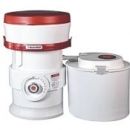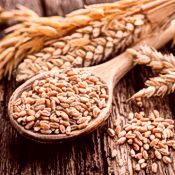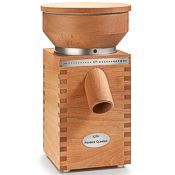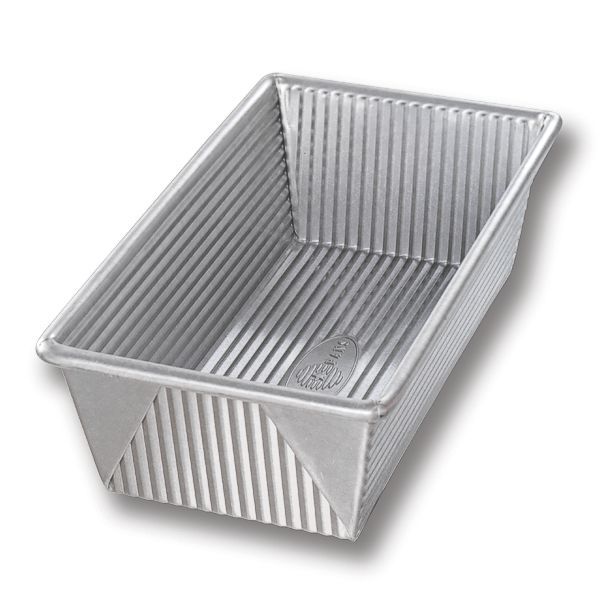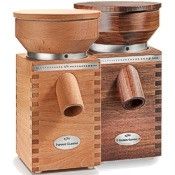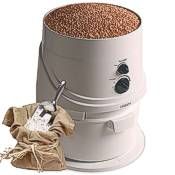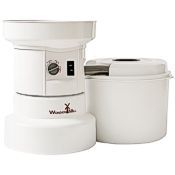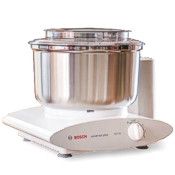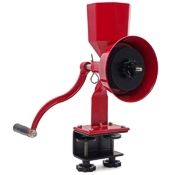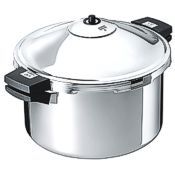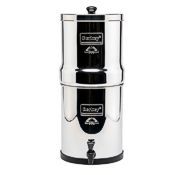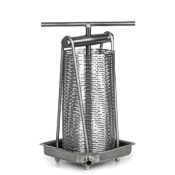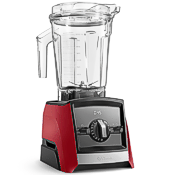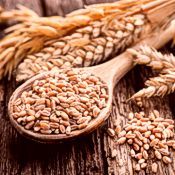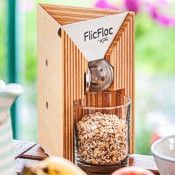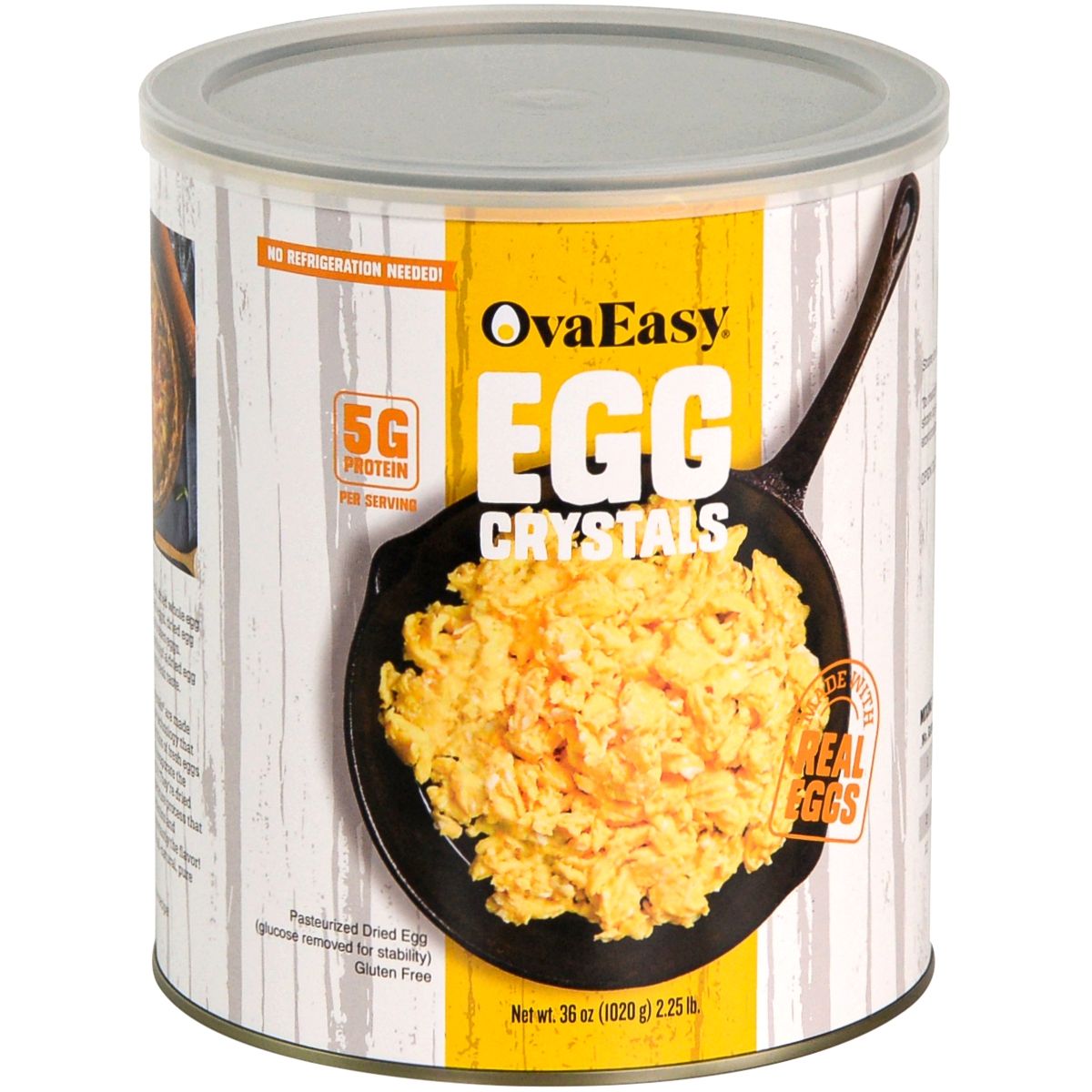Royal Lee Household Mill
details
Flat Rate Shipping Note
Ground shipping is free to the 48 contiguous states for orders $75 and over, except where noted on product pages.
For orders totaling under $75, shipping and handling is $12 flat rate. (Some small items ship for $8 as noted on those product pages.)
Why Buy from PHG?
- Quality, curated product selection
- Prompt, personal customer service
- 100% satisfaction guarantee


 Canadian orders by phone
Canadian orders by phone
- Royal Lee grain mill
- 4 quart glass flour bowl
- Bowl cover
- Cleaning brush
- Disassembly tool
- Owner's manual
Description
Royal Lee Household Mill
The Royal Lee Household Mill grinds dry grains, including dried sprouted grains, into whole grain flour or meal right in your kitchen. The Lee mill is a precision-engineered appliance based on Dr. Royal Lee’s original 1940s design. In the current mill, Lee Engineering has upgraded the electrical components, made the motor quieter, added an automatic overheat protection circuit, and made many other improvements.
The Lee mill has a unique design; it's a high speed micronizing mill, but unlike most micronizing (aka "impact") flour mills that use disks with opposing rows of stainless steel teeth, the Lee mill features impeller arms that sling grain particles at high speed against a stationary synthetic stone. By adjusting a gap at the outer circumference of the milling chamber, the user determines how fine particles must be to exit the chamber. Setting the outlet gap tighter increases the time flour remains in the chamber, and decreases the throughput rate. In this respect, the Lee mill is identical in basic concept to a commercial hammer mill. A typical stone burr mill controls output texture by the burr gap, a typical impact mill controls it by input restriction, and the Lee mill controls it by output restriction.
Input Rate
Input rate is self-governing in the Lee mill, so the rate of grain input automatically keeps pace with the texture setting you choose.
超细粉
Capable of grinding most dry grains, experience with this mill has demonstrated to us at Pleasant Hill Grain that the Lee mill is uncompromising in its focus on ultra-fine flour. It produces the finest flour of any home grain mill we've ever seen, and if making the finest whole grain pastries is your goal, we think the Royal Lee mill certainly should be a finalist in your selection process. At its finest setting, the flour truly is incredibly fine, containing virtually no coarse bits at all. Such flour is just what you want for pastries, but offers no advantage for making most types of bread. To decide whether the Royal Lee meets all of your needs, you'll want to weigh some additional factors.
As is usually the case in life, achieving an accomplishment as remarkable as the fineness produced by the Lee mill, involves tradeoffs. From our perspective, we find those principally in the Royal Lee's price, milling speed, flour temperature, and ranges of input and output sizes, versus those of other mills.
Starting with cost, the Royal Lee clearly occupies the upper tier of mill pricing. How you personally look at that price will likely depend on your mill budget, how highly you value ultra-fine flour, and how important the mill's limitations are to you. Some will say “no way,” others “well worth it.”
-
“Thanks to so much! You guys have been just so great with your communication. I feel completely in the loop and I know my order is being well taken care of.”
– Rosemary B., OR
Milling Speed
看着铣削速度,我们最好在其设置timed the Royal Lee mill at 25 minutes to grind a full hopper (8 cups) of hard wheat. As mills go, that's a long, long time—easily the slowest milling performance we've ever observed. In fairness, of course, at that finest setting the mill is using that time to make incomparably fine flour. At the Lee mill's medium setting, which produces flour perfect for making bread, it ground 4.7 ounces per minute, still 2-4 times slower than most of the mills we offer. A slower mill can simply be started earlier to have your flour ready when you need it, but a two-to-four-fold difference is a lot, bearing in mind that grain milling is inherently a somewhat noisy operation.
Related to milling time, in the Lee mill, is the temperature of the flour. Excessive heat destroys nutrients, and while most of the mills we offer keep flour around 118 to 120 degrees at their finest settings, we measured the Lee mill's finest flour at 155 degrees F, which is simply extreme. Milling bread-texture flour kept it at 122 degrees, just a little over what's common among other quality mills. These results were for full-hopper batches; when milling smaller amounts, temps likely won't get quite as high. We aren't aware of quantitative figures on the difference in nutrition loss between 118 degrees and 155 degrees, and when making pastries your primary focus may not be on nutrition, but the presumption would seem to be that it has some value, or you'd just be baking with white flour.
Output texture range
Having established that the Lee mill has fine flour nailed like never before, it can also produce excellent bread flour and, by moving the texture lever to the coarse end of its range, it will also produce a meal texture. Some mills that are claimed to produce meal actually only make coarse flour (which is finer than meal), but the Lee mill will indeed make a true, gritty meal texture—something that other micronizing mills cannot do. And because the adjustment mechanism is continuously variable within its range, you can choose any texture between true meal, and ultra, ultra fine. The Royal Lee mill's output range stops at meal texture, so it does not share the ability of some mills we offer, to produce a cracked-grain result (coarser than meal texture.)
Input size range
While some mills will accept large-kerneled field corn, the Lee mill's inlet size requires that field corn (also called dent corn) be reduced in size first, using a food processor. You could probably use a blender instead, taking care not to go too far with this pre-milling, as Lee Precision says not to regrind flour with the mill.
Another limitation of the Lee mill is that it cannot grind beans or oilseeds. The oilseed restriction applies to most home grain mills of the types that can make good bread flour. The makers of the Lee mill recommend that users who want to mill products that are higher in oil or moisture content purchase a second mill of the steel-burr type, made for grinding coffee or seeds. Most such mills are quite inexpensive, and we think this is good advice. Most grain mills can grind beans if they fit into the mill's inlet which, for some mills, requires pre-processing.
Assembly & Cleaning
We've found installation of the flour skirt between the mill and the included flour bowl awkward, and its removal after milling to be messy. Also, if the stationary stone is removed for cleaning, its reinstallation is quite difficult due to its tight fit tolerance with the milling chamber.
Overall fit and finish of the mill are impeccable, as one expects—but doesn't always get—from a countertop machine at this price point.
Unparalleled for Fine Flour!
In summary, we find that the Royal Lee Household Mill's ability to make incredibly fine flour from whole grains is unparalleled. If your baking focuses on whole grain pastries and if none of its tradeoffs are deal breakers for you, then we think this mill offers excellent value.
For more details please see the specs tab, above.
Whole Grain Nutrition: Harvest the Benefits!
Imagine that for years, your children ate mainly candy. Imagine that you did, too. Imagine an entire nation on a candy diet. Imagine the health consequences.
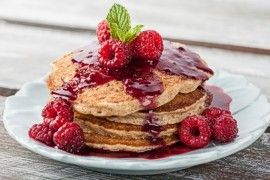
The human body is an absolute marvel; scientists have a long way to go to understand a tenth of how we work. But as capable and as resilient as our bodies are, common sense and history teach that we need wholesome, nutritious food to remain healthy and strong. The denatured byproducts being mass marketed today don't provide what we need, because they've been profoundly altered by processes in which real nutrition is considered last, or not at all.
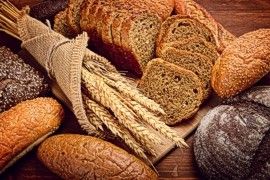
Making real food is more than doable,it's downright funwith help from Pleasant Hill Grain! Agrain milllike the KoMo Classic is the place to start. And to make whole grain bread quickly, easily and with consistently wonderful results, nothing beats a qualitystand mixerthat's capable of mixing and kneading bread that's ready to pop in the oven—quickly and without hand kneading. These machines make it easy to turn the corner to a far better and more enjoyable way of eating!
Compare Electric Grain Mills |
|
 |
Click to see ourelectric grain mill comparison table. We offer a wide selection of grain mills:Click to see our category page of all grain mills! |
Highly Recommended Whole Grain Cookbooks & Videos!
Don't miss our treasury of cookbooks for whole grain cooking & baking! We have old favorites and exciting new titles, full of tasty and nutritious recipes. These resources will open up new worlds of whole grain adventure for you, whether you're an old hand or just beginning the journey. Whole grain wheat, beans & alternative grains are all covered!
Click forcookbooks & DVDs.
Seebulk whole grain wheatandmany other grains.
Click for info ongrinding fibrous materials and nuts.
This product is made in the USA!
Did we forget something? If you need more information about this product, please tell us what else you'd like to know with aquick emailor live chat!
Specs
Select product option(s) from the drop-down menu at top of page to see item-specific specifications here.
| Manufacturer Part Number | S-700 |
|---|---|
| Brand | Royal Lee Organics |
| Width | 9.3" |
| Depth | 13.8" |
| Height | 17.6" |
| Product Weight (lbs.) | 23 lb. |
| Grinding burr diameter | 6.25 |
| Finish | Painted glossy |
| Housing Material | Cast aluminum |
| Burr Material | Corundum |
| Bowl Material | Glass |
| Capacity (volume) | 8 cups |
|---|---|
| Power | Electric (AC) |
| Horsepower | 1 HP |
| Volts AC | 120 |
| Watts | 746 |
| Amps | 7 |
| Hz | 60 |
| Cord Length | 36" |
| UPC | Does not apply |
| Origin | USA |
| Warranty Length | 1 year disc assembly, 5 years motor and stone, 15 years other parts |
Shipping
Select product option(s) from the drop-down menu at top of page to see item-specific specifications here.
Accessories
Accessories for this product:
-
Apple Pie Gift Bundle
苹果派被广泛认为是美国最值列表ed dessert, and it's no mystery why! This year you can give someone our Apple Pie Gift Bundle that provides them with quality tools to make a splendid pie.TheApple Mate 3clamps to the counter or table's edge and makes peeling, coring and slicing whole apples a breeze (ideal for potatoes and pears too!). Stainless steel blades stay sharp a long time, but extras are available if you want to ensure that you'll have them on hand "down the road" when you want them.We've printed...
(More info) -
Artisan Baker's Gift Bundle
Are you ready to wow an aspiring artisan bread baker in your life? The Artisan Baker's Gift Bundle will start them on their journey!
The best way to measure ingredients for baking is to weight them, and theOXO Good Grips Scaleweighs up to 11 pounds in ounces, pounds, kilograms and grams. A feature we especially appreciate is the pull-out digital display so we can read the weight even when we have a large bowl on the scale.
Proofing dough in theround rattan proofing basketmade by KoMo in Austria, with abasket...
(More info)
Reviews
PHG provides product-giveaway sweepstakes entries to all submitters of reviews, a program which also accepts entries without purchase. Take advantage of this program for repeated opportunities to win great PHG products! Nature of review does not influence odds of winning. Full contest rules are availablehere. All reviews are by verified buyers.
Related products:
Featured Items:
KoMo Classic Grain Mill
Nutrimill Classic Grain Mill
WonderMill Grain Mill
Brød & Taylor Dough Proofer
Bosch Universal Plus Mixer
Ankarsrum Stand Mixer
Wonder Junior Grain Mill
库恩Rikon 12 l家庭炊具
Berkey Water Purifiers
Tabletop Fruit Press
Vitamix A2500 Ascent Blender
Hard White Wheat
Oat/Grain Flaker
OvaEasy Eggs Crystals
See product description below.









